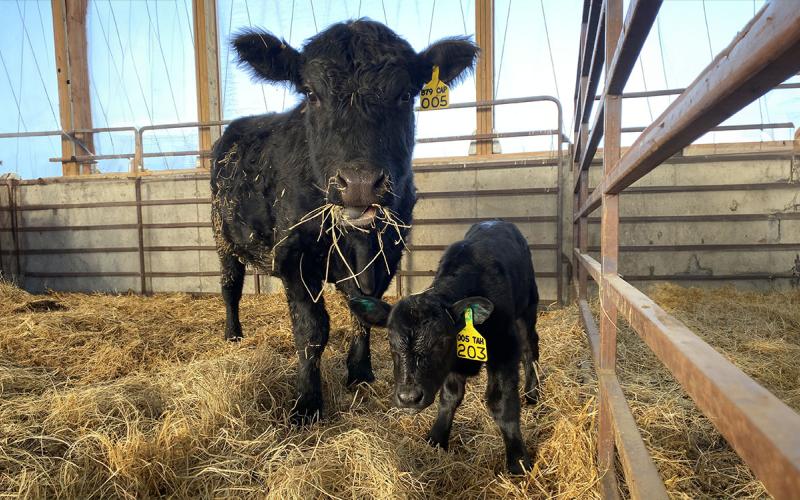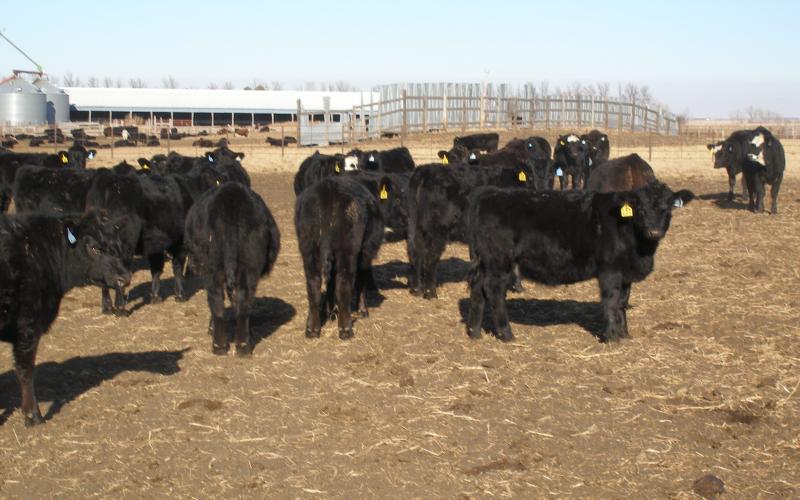Originally written by Grady Ruble, former SDSU Extension Cow/Calf Field Specialist.
Bull sale season is upon us and those who are in the market for a new herd sire face a choice that will impact their herd for many years. Considering the number of bull sales, catalogs, and an ever-growing amount of performance information one must wade through, identifying the bull you wish to purchase can be the majority of the battle. With that in mind here are few things to hopefully help make it easier.
Things to Consider
Breeding & Marketing Priorities
Establish a set of priorities in regard to breeding and marketing. Identifying your marketing goals will help determine what characteristics a bull needs to have. Are replacements retained and cull heifers and steers sold at weaning? Are cattle owned through the finishing phase? Will the bull be bred to heifers, cows, or both? Does your production environment limit the level of acceptable performance for certain traits? Questions like these will help identify traits important to the success of the ranch.
Expected Progeny Differences
Expected progeny differences (EPDs) are a great tool when selecting breeding stock. Depending on your goals, not all of the EPDs provided are relevant to your success. For instance, if replacements are purchased and all the calves are finished in the operation’s feedlot, selecting bulls with strong maternal capability would not be economically beneficial. In this instance the desired bull should have accelerated growth and carcass characteristics. If replacement females are retained then maternal capability of the bull needs to be emphasized.
Phenotypic Traits
Consider phenotype. EPDs are great indicators of what a bull is genetically capable of passing on to the next generation but do not ensure cattle are functional. Factors such as structure and body are important not only to the success of a breeding bull, but also to the success of his daughters as cows. Other phenotypic traits like muscle and frame are also important when marketing feeder calves. Conformation is often an area that dictates whether the calves will be subject to selling price premiums or discounts.
Crossbreeding & Heterosis
Don’t forget about crossbreeding! The result of crossbreeding is called heterosis, which is a tool that has benefits not only in terms of calf performance but cow performance as well. Oftentimes the greatest impact of heterosis is seen in that of the crossbred cow. It has been well documented that the impact of heterosis on lowly heritable traits such as longevity, maternal ability, and reproduction has a compounding affect resulting in cows that stay longer in the herd and ultimately produce more pounds of calf.
Breed complementarity is another beneficial result of crossbreeding. The advantage found in complementarity is producing a calf that exhibits strengths associated with both parent breeds. This occurs by the mating of two different breeds with the goal of the strengths of each breeding masking the weaknesses of the other. An example being, crossing British cattle with Continental cattle. The British cattle offer carcass quality and fleshing ability while the continental cattle bring growth and lean yield. Ideally the result is a high performing calf with good carcass quality and yield.
The Bottom Line
Bulls are the quickest way to make genetic and phenotypic improvement in your herd. A clear set of priorities will help identify the traits that are economically relevant to your operation. EPDs are a great tool to help identify the bulls that will fit your operation genetically and phenotypic observation will confirm whether they will last. Consider adding some heterosis and you have a recipe for success.


